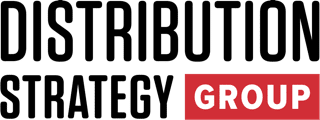Customer expectations have fundamentally shifted. What was once acceptable—a three-to-five-day delivery window with limited visibility—now feels antiquated in an era where Amazon Prime has conditioned buyers to expect precision, speed, and transparency. For wholesale distributors, this shift represents both a massive challenge and an unprecedented opportunity to differentiate through superior logistics execution.
The harsh reality is delivery delays are no longer just operational hiccups, they’re profit killers that cascade through every aspect of your business.
The Hidden Cost of Logistics Inefficiency
Consider the downstream impact of a single late delivery to a contractor on a critical job site. That delay doesn’t just cost you the freight differential or a customer complaint. It triggers inventory holding costs, emergency expediting fees, potential customer defection, and most critically, it damages your reputation as a reliable supply chain partner.
Industry data shows that distributors lose an average of 12% of annual revenue to logistics-related service failures. But here’s where it gets interesting – the companies that have invested in smart logistics optimization are reducing their cost-to-serve while simultaneously improving delivery performance. They’re not just avoiding losses; they’re creating a buffer that keeps competitors at bay.
Technology as the Great Equalizer
Smart logistics technology proves that size doesn’t always win. Mid-sized distributors are leveraging AI-powered route optimization, predictive delivery analytics, and real-time visibility tools to outperform larger competitors who are still running on legacy systems and manual processes.
Take dynamic routing algorithms. These systems factor in traffic patterns, weather conditions, driver availability, and customer preferences to optimize delivery routes in real-time. One regional distributor reduced delivery costs by 23% while improving on-time performance from 78% to 94%, simply by letting algorithms manage what humans couldn’t process efficiently.
Demand sensing technology is another game-changer. Instead of relying on historical forecasting models that react to trends, these systems predict delivery needs based on customer behavior patterns, seasonal fluctuations, and market signals. This means inventory is positioned closer to where it’s needed, reducing both delivery times and carrying costs.
Beyond Speed: Service Differentiation
The distributors winning in today’s market understand that smart logistics isn’t just about faster delivery, it’s about creating service experiences that competitors can’t easily replicate. Real-time delivery tracking, proactive communication about delays, and flexible delivery windows are becoming baseline expectations.
More sophisticated players are going further. They’re using behavioral intelligence to understand how different customers prefer to receive deliveries, optimizing inventory placement based on predictive analytics, and even offering premium logistics services as profit centers rather than cost centers.
The Labor Advantage
Here’s a critical insight: smart logistics technology isn’t replacing human expertise, it’s amplifying it. Drivers equipped with mobile optimization tools are more productive and less stressed. Warehouse teams with AI-supported picking systems handle more orders with fewer errors. Customer service representatives with real-time visibility can proactively solve problems instead of reactively managing complaints.
This matters enormously in today’s tight labor market. Companies that implement smart logistics report higher employee satisfaction, lower turnover, and better customer relationships.
Implementation Reality Check
The challenge isn’t identifying what technology to deploy—it’s prioritizing implementations that deliver immediate ROI while building foundations for longer-term transformation. The most successful distributors are taking a phased approach by starting with route optimization and delivery tracking, then layering in predictive analytics and advanced automation.
They also recognize logistics optimization touches every department. It’s not just an operations initiative. This requires alignment between sales, procurement, finance, and customer service.
The Competitive Imperative
Distribution leaders who delay logistics modernization are choosing to compete with one hand tied behind their backs. While they’re managing delivery problems reactively, their forward-thinking competitors are using logistics excellence to win new customers, command premium pricing, and build unshakeable customer loyalty.
The window for competitive advantage through smart logistics is still open, but it won’t remain that way indefinitely. As these technologies become more accessible and adoption accelerates, logistics excellence will shift from differentiator to table stakes.
As Chief Operations Officer of a Distribution Strategy Group, I'm in the unique position of having helped transform distribution companies and am now collaborating with AI vendors to understand their solutions. My background in industrial distribution operations, sales process management, and continuous improvement provides a different perspective on how distributors can leverage AI to transform margin and productivity challenges into competitive advantages.

